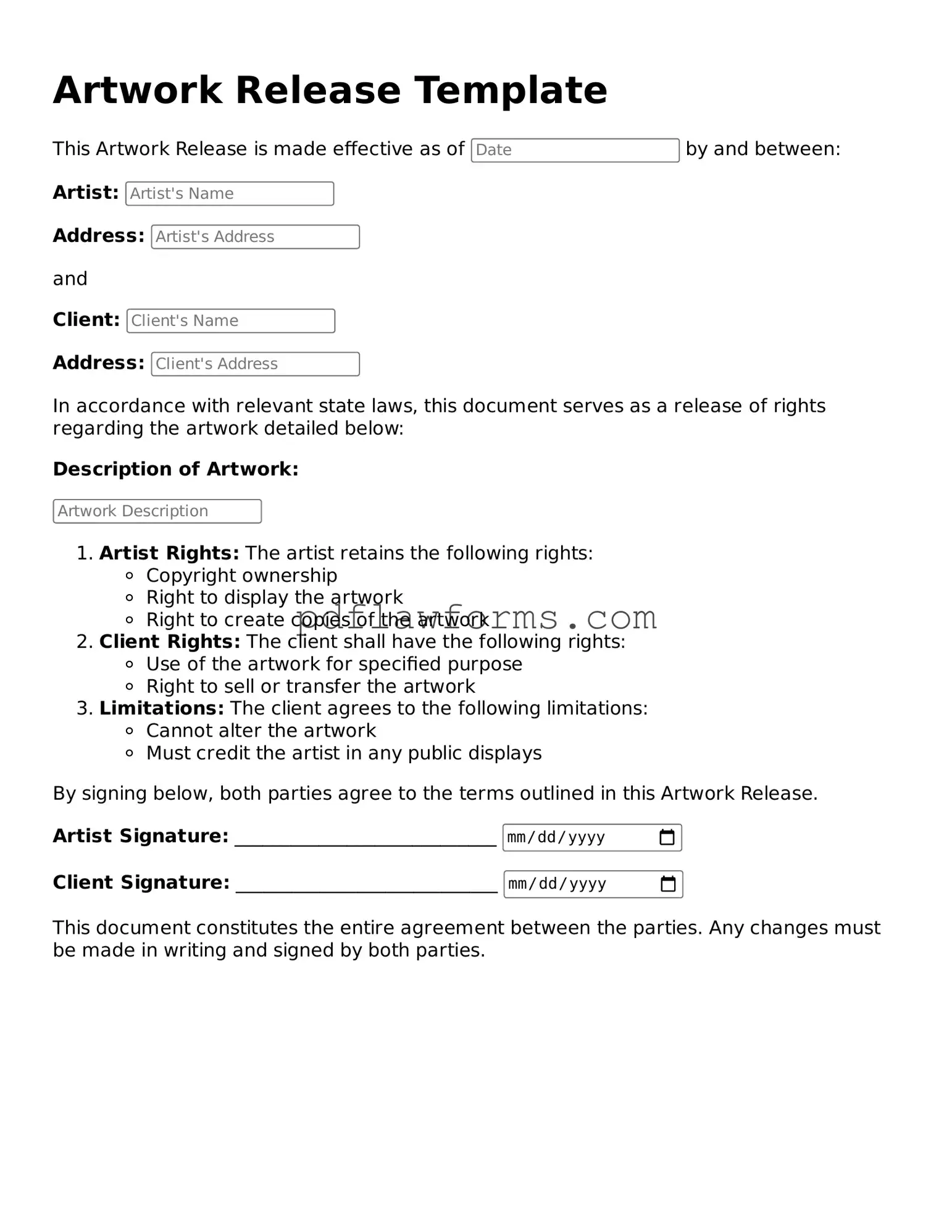When filling out an Artwork Release form, individuals often overlook critical details that can lead to complications later on. One common mistake is failing to provide complete contact information. It is essential to include a valid phone number and email address. Without accurate contact details, communication regarding the artwork may become challenging, potentially resulting in misunderstandings or missed opportunities.
Another frequent error involves neglecting to specify the scope of the release. Some individuals might assume that their permission covers all uses of the artwork, but this is not always the case. Clearly defining how the artwork can be used—whether for promotional materials, online content, or other purposes—helps protect both the artist's rights and the interests of the party requesting the release.
People also tend to forget to date the form. A date is crucial as it establishes when the release was granted. This detail can be particularly important if there are disputes over the use of the artwork in the future. Without a date, it may become difficult to ascertain the timeline of permissions.
In addition, some individuals fail to read the entire form before signing. This oversight can lead to unintended agreements or misunderstandings about the terms of the release. It is always wise to thoroughly review the document to ensure that all aspects are clear and agreeable.
Another mistake is not including all necessary signatures. If multiple parties are involved—such as collaborators or representatives—ensuring that everyone signs the form is vital. A missing signature could invalidate the release, causing potential legal issues down the line.
Moreover, individuals sometimes overlook the need for a witness or notarization, depending on the jurisdiction and the nature of the artwork. While not always required, having a witness can add an extra layer of legitimacy to the document, making it harder for disputes to arise.
People may also misinterpret the terms of the release, leading to confusion. For instance, some might think that granting a release means they relinquish all rights to their artwork, which is not necessarily true. It is important to understand that a release can be limited and specific, allowing the artist to retain certain rights while granting permission for use.
Additionally, failing to keep a copy of the signed form is a mistake that can have significant consequences. Having a personal record of the agreement ensures that both parties can reference the terms if needed. Without a copy, artists may find themselves at a disadvantage if questions arise later.
Lastly, some individuals may not consider the implications of the release in relation to future projects. Once an artwork is released, its use can influence how similar works are treated. Being mindful of these implications can help artists navigate their creative careers more effectively.
